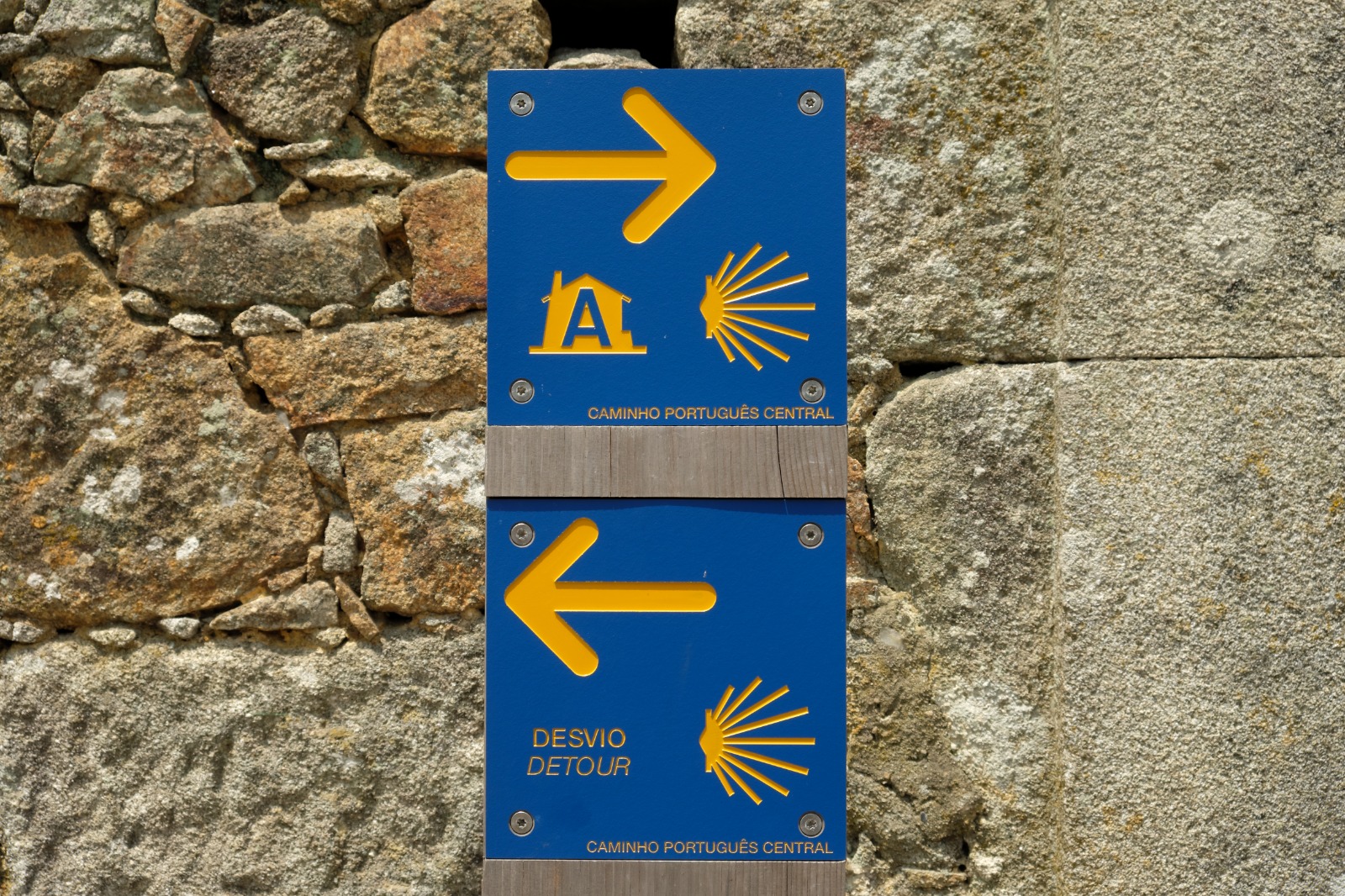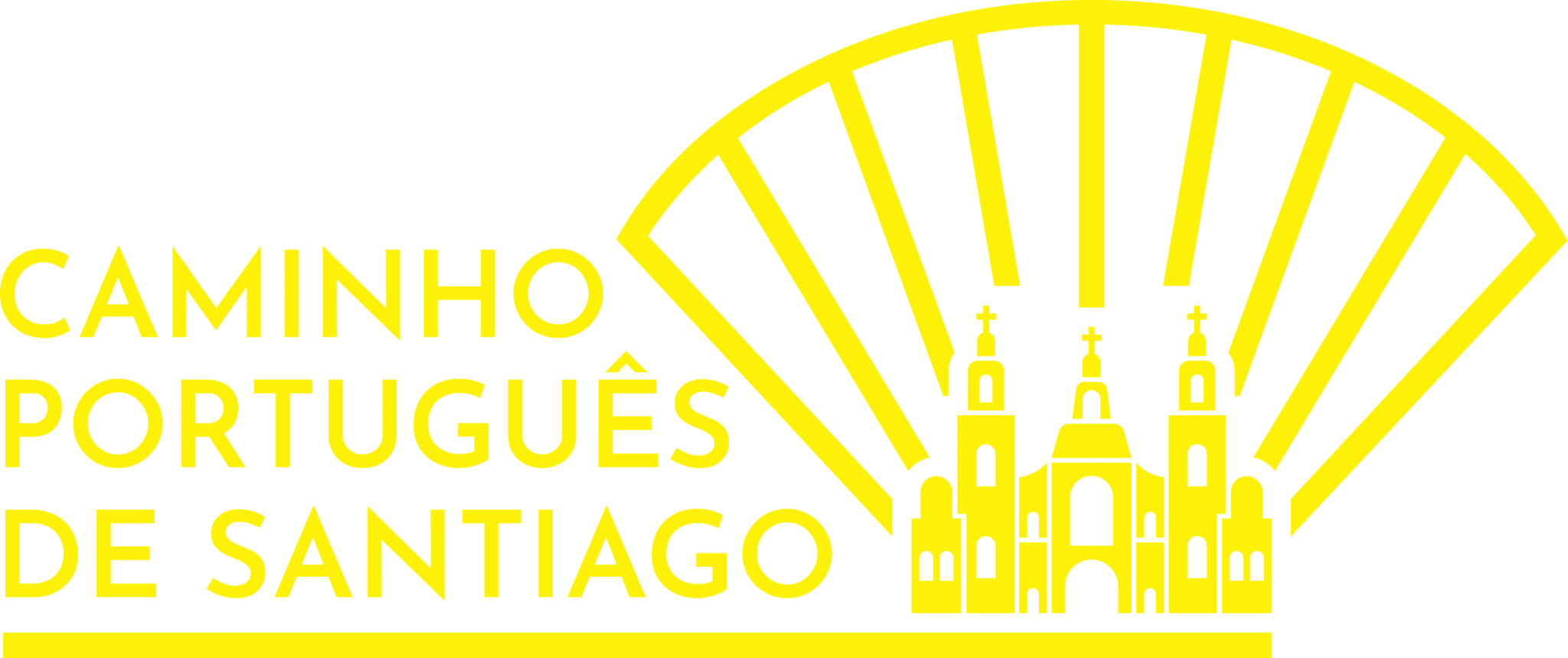Portuguese Coastal Way or Central Way? Discover which one is best for you.

There are no easy decisions on the millennial trail. The important thing is that you have all the information you need to make the right choice when the time comes. So, between the coastal path and the central path, come pilgrim and choose. In this article, we write about the strengths and weaknesses of each of the Portuguese Santiago routes. This will help you find out which roads suit you best. Shall we get to it?
What is the difference between doing the Coastal Way and the Central Way?
The question “Portuguese Coastal or Central Way?” has many answers. This is because both routes have their characteristics. The Coastal Way has a close relationship with the ocean, being next to it for practically the entire stretch, while the Central Way (hence the name) takes you through the middle of Portugal and Galicia. In a simplistic way, that’s the big difference between these two Portuguese paths.
However, the truth is that the distinctions do not end there. Each town on the route has its own history with the path. Moreover, the terrain walked on is so different that the experience in each place is unique. Even the cuisine, in towns less than 100 kilometers apart, changes completely. It’s a case of asking whether you prefer fish or meat, as the answer can help you choose!
In essence, both routes have their charms and dislikes. So let’s get closer to the sea, to find out if this is the Way for you!
Portuguese Way of the Coast to Santiago

- It is longer.
This Way to Santiago is up to 280 kilometers long, especially if you choose the modern variation of the Senda Litoral. It is 20,000 meters longer when compared to the central one. In other words, one more stage. Despite all this, the route to Santiago de Compostela, has fewer mountains and climbs.
This way, although you have more to walk, the effort may even be less. At least here you don’t have to climb the highest point of the Portuguese Way to Santiago.
- You have more freedom to choose between courses.
On this route, every day can be different, as you have seen before. Feel like going against the ocean to watch the tide? You can follow the ocean. Feel like going through the roads and mountains, getting to know the fauna and the people? Then go ahead, you can too!
Planning is the watchword, to understand what you want to see, feel and experience in this special moment of your life. To help you in this process, we have described the stages with the main points to visit on our website, both for the certified Coastal Path and the Litoral Trail Coastal Path.
- For those who like the sea, it is a treat.
It cannot be said often enough. For those who love the ocean, there is no better route. From excellent restaurants with the freshest fish in the region, to the architecture of old fishing towns with their colorful stalls, everything seems to have been designed by Walt Disney himself.
However, as with everything in life, you need to be careful when everything looks wonderful. Because you go near the beach, the sun can cause more dehydration and scalding. Even with the help of a hat, which you should always wear, the sand on the beach reflects 17% of the UV radiation.
Furthermore, even if this part of the Iberian Peninsula has more clouds than the south, you still have to protect yourself from the Milky Way’s biggest star. This is because the rays can get through this cloudy layer of sky, giving you a false sense of security along the way.
So don’t forget to take water and sunscreen with you. Those will be your best friends while walking along the coasts of Portugal and Galicia.
- There are fewer people walking along the Coast.
Depending on the perspective, it can be either good or bad. As always, let’s start by looking at the sparkling side of life, to explain our point to you.
Along the way you will meet many other pilgrims. Coming from all over the world, this is an opportunity to get in touch with other cultures, languages and traditions that you would never expect to meet.
This way, with fewer people on the way, you have a better opportunity to create a relationship with these people, chat longer and even create a circle of pilgrim friendships during your journey.
This happens because hostels have fewer people to accommodate. So in a natural way those who keep you company on this adventure, naturally head to the same hostels, towns and even restaurants that are less likely to be full.
However, since it is not as popular, in the Summer months these gathering places fill up easily because there is not enough infrastructure. This includes seating areas, cafes, water fountains, and hostels.
All this, despite an effort from Portuguese municipalities to improve in recent years, can make life difficult for Santiago’s pilgrims. To prepare your Way without thinking about these issues, go through our stages that have hostels, restaurants and places of interest designed for each pilgrim!
The Central Portuguese Way
- In the absence of an ocean, we have unique rivers and some of the greenest mountains.
With several rivers along the way, you won’t be joined by the Atlantic at any time. However, it is advisable to bring your swimsuit and a towel. In Portugal alone, there are two wonderful river beaches in Barcelos and Ponte de Lima, ready to welcome fearless pilgrims. In fact, it’s the perfect ingredient for the end of a long day. Especially if you arrive in what is one of the oldest towns in our country with time to rest, as it is a difficult and long stage.
- You won’t get lost, so easily.
The route has been well defined for millennia. So there is no room for improvisation on the Coastal Path when you travel through central Portugal. Therefore, leaving the established route is possible, but unlikely. Even if you do, locals will quickly let you know you’re heading in the wrong direction.
To find out more about the central stages, visit our dedicated tab here.
- It is the second most visited by pilgrims.
The popularity of the central route is a source of pride for all of us. However, thanks to its history so closely linked to the construction of the country that is Portugal today, the economic importance of the crossings during the Middle Ages, and policies to promote the route, it is only natural that this should be the case.
Thanks to the Black Death, wars in Europe and the spread of Protestantism, the pilgrimage became a mirage of other times. In fact, there are reports from 1867 stating that only 40 pilgrims reached Santiago de Compostela that year.
However, much has changed over the years. With the promotion of the first Compostelan Holy Year of the millennium in 2004 and the classification of the French Way as a World Heritage Site in 1993, Portugal and the Central Route have gained international relevance in this world. When you add good weather, low prices and incredible landscapes, this is the recipe for the success of this trail.
But every landscape has its downside. More people means there’s less space to take a quiet walk, with just you and your thoughts. Plus, despite the excellent infrastructure, in summer time it’s always hard to find somewhere to sleep, eat or just rest.
- One stage shorter.
For those with less available time, the Central Way can be completed in just 10 days. In reality, some manage to cross it in only 5 or 6 days. It’s enough to go by bicycle, for example, or to be in excellent physical shape.
But 10 days is the ideal period to get to know the best that the millennial trail has to offer. With the moments of rest, leisure, and introspection that it demands. Make the most of it, it goes by fast!
- You find infrastructure easily.
Here, the law of supply and demand applies. Because there is so much demand, traders and municipalities are better prepared to welcome pilgrims with quality. That means more places to rest, drink and eat.
However, if you prefer to undertake the journey with less comfort, this might not be the right choice for you. After all, it’s one of the most popular routes. Nevertheless, this “excessive tourism” tends to start from Valença or Tui, as it’s from here that you have the minimum kilometers required to receive the Compostela.
After all, which one do you prefer? The Portuguese Coastal Way or the Central Way?
All in all, both trails have a unique beauty. Even with such a small country, there is geographical variety to have two such different trails. We are lucky to be so close to them, in Portugal.
Now you are missing. Have you taken any of these routes? Are we missing any important distinctions? Talk to us in the comments!
